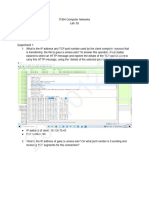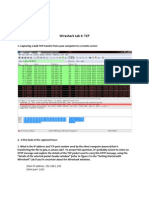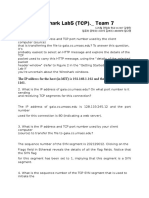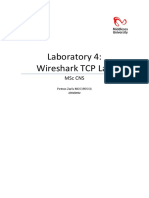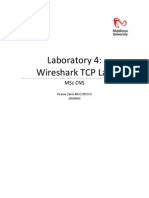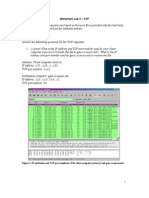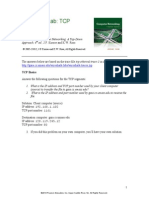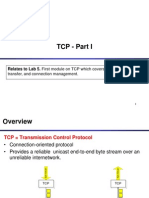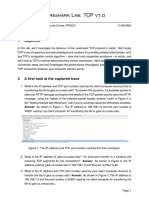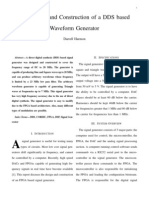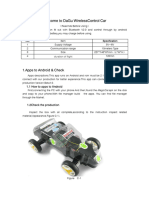0% found this document useful (0 votes)
30 views5 pagesCPS706 Lab4 Report
The lab report details the analysis of a TCP connection between a client and a server, including IP addresses, port numbers, and segment information. It discusses the TCP handshake process, data transfer metrics, and the behavior of the connection in terms of slow start and congestion avoidance. Additionally, it provides insights into throughput, estimated round-trip times, and the absence of retransmissions.
Uploaded by
ophanji662Copyright
© © All Rights Reserved
We take content rights seriously. If you suspect this is your content, claim it here.
Available Formats
Download as PDF, TXT or read online on Scribd
0% found this document useful (0 votes)
30 views5 pagesCPS706 Lab4 Report
The lab report details the analysis of a TCP connection between a client and a server, including IP addresses, port numbers, and segment information. It discusses the TCP handshake process, data transfer metrics, and the behavior of the connection in terms of slow start and congestion avoidance. Additionally, it provides insights into throughput, estimated round-trip times, and the absence of retransmissions.
Uploaded by
ophanji662Copyright
© © All Rights Reserved
We take content rights seriously. If you suspect this is your content, claim it here.
Available Formats
Download as PDF, TXT or read online on Scribd
/ 5


